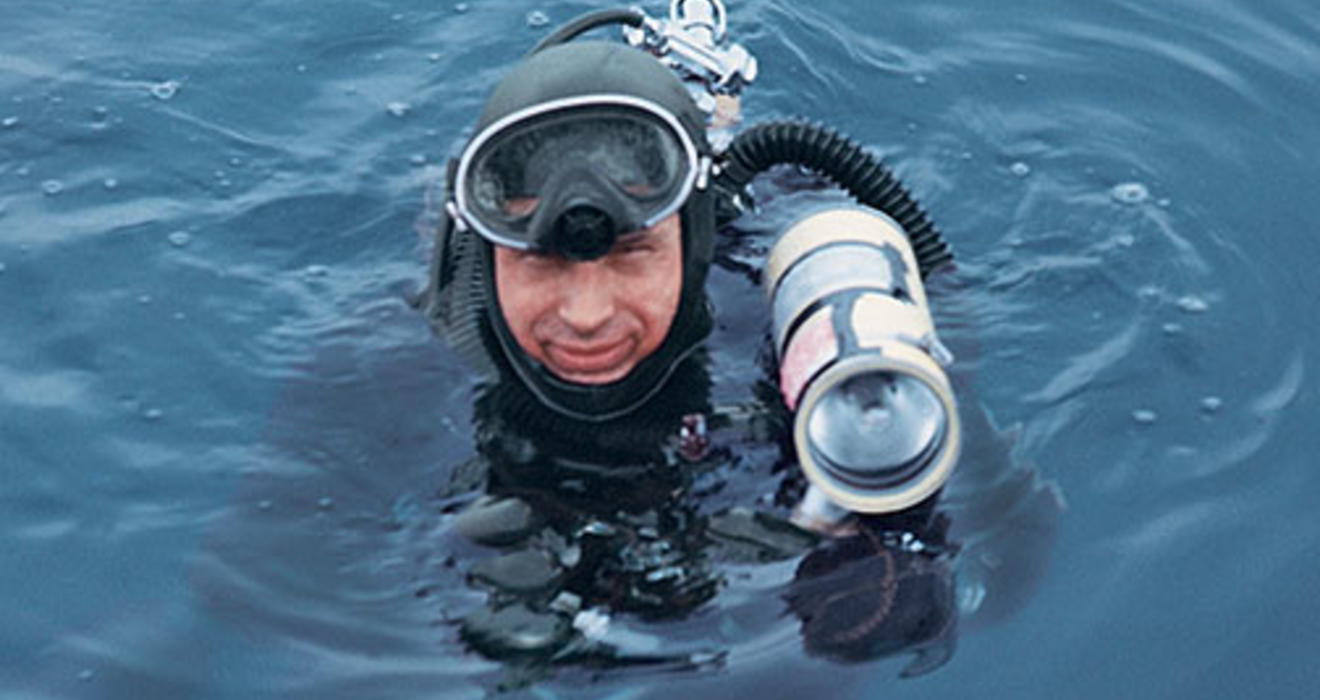
Jan. 1, 1928 – April 9, 2013
Michael deCamp ’49 spent his boyhood summers at the Jersey shore, swimming in the surf and wondering what wonders might lie beneath it. He found out in 1954 when Carleton Ray, a friend who happened to be the director of the New York Aquarium, invited him to the Bahamas to try skin diving — something Ray was certain his athletic, ocean-loving friend would enjoy. DeCamp would spend the rest of his life quietly promoting the sport, both as a diver and as a photographer whose high-resolution shots of sunken ships earned him the title “the father of East Coast wreck diving.”
“He felt they were like Spanish castles,” says Wesley, his wife of 63 years. “They had a lot of personality.”
DeCamp dove down to tankers, freighters, German U-boats, submarines, and passenger liners like the Andrea Doria, to which DeCamp led the first recreational dive in 1966. In 1964, a few days after the Norwegian tanker Stolt Dagali went down 15 miles off the Jersey coast, deCamp followed an oil slick to locate the ship and recovered the only body to be found.
He was most proud of his expedition to Antarctica. Wearing only a quarter-inch-thick wetsuit while diving through a hole in ice so thick it had to be dynamited, deCamp spent several months swimming with Weddell seals and adding to his collection of photographs.
Those photos, which deCamp published along with essays in magazines like Skin Diver and Sports Illustrated, stirred the imaginations of young men like Chuck Zimmaro, who was a starry-eyed teenager when he first met his hero. “I compare Michael to [Civil War photographer] Mathew Brady,” says Zimmaro, a longtime scuba instructor. “There had been a lot of stuff written about the Civil War, but very few photos to bring those words to life. Like Brady, Mike brought a world to life. In a way, he was preserving underwater maritime history.” Shortly before his death deCamp donated his entire collection — some 250,000 slides — to the New Jersey Maritime Museum in Beach Haven.
Even as he continued diving and taking photos of the underwater world, deCamp gravitated to serious art photography, fashioning surreal landscapes in a form he called “sculptural photography.” That work, too, has been exhibited in shows all over the world.
“I don’t think there’s ever been anything like the works of Michael deCamp,” says Deborah Whitcraft, director of the New Jersey Maritime Museum. “He is like a king in the diving community — and always will be.”
Freelance writer Merrell Noden ’78 is a frequent PAW contributor.






No responses yet